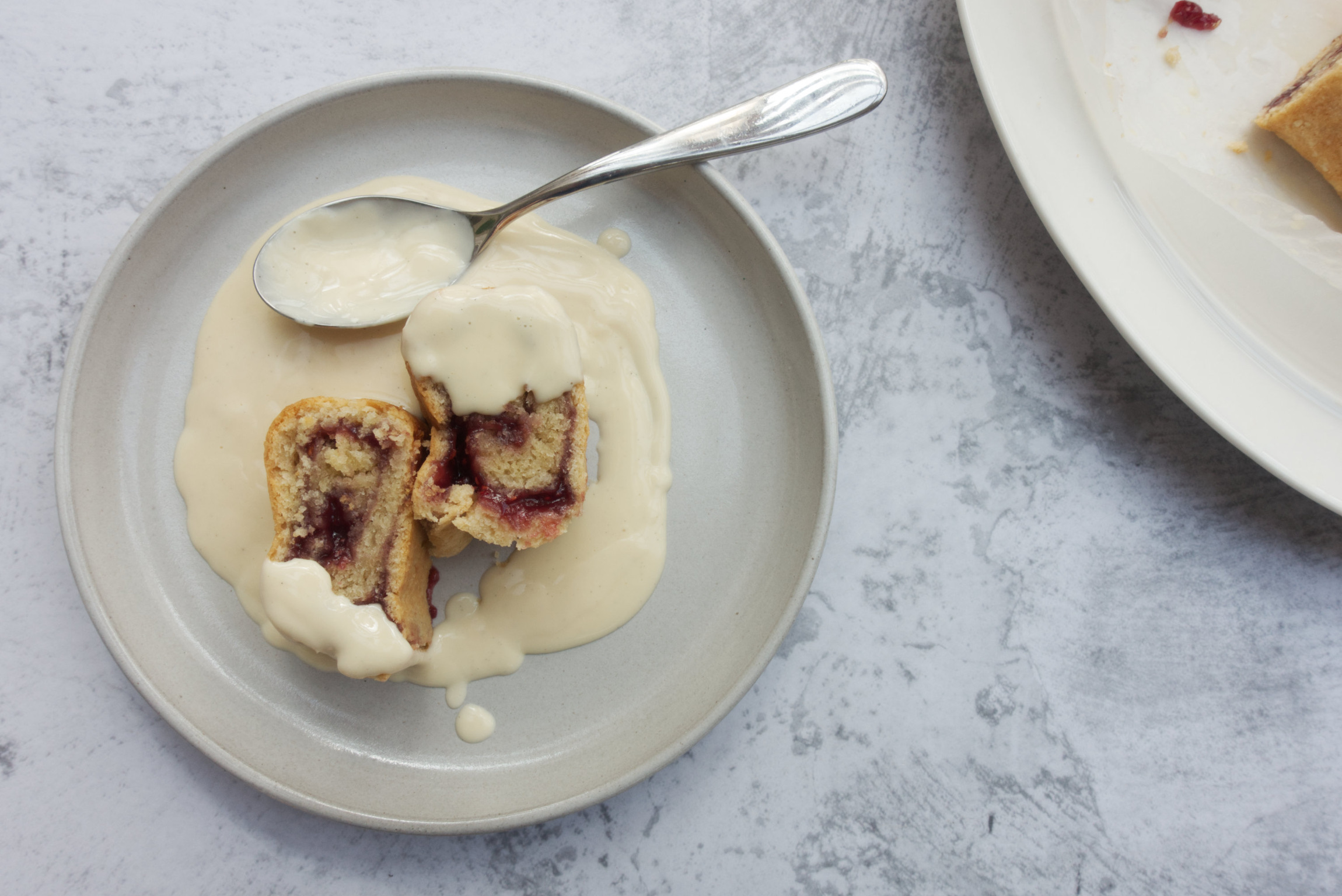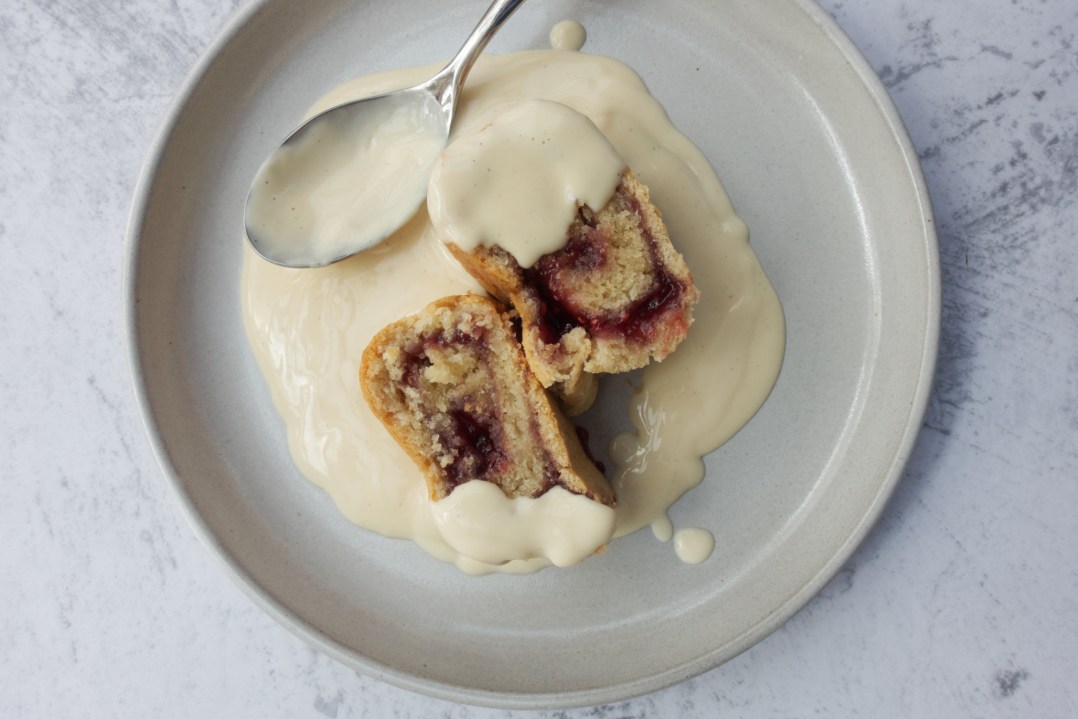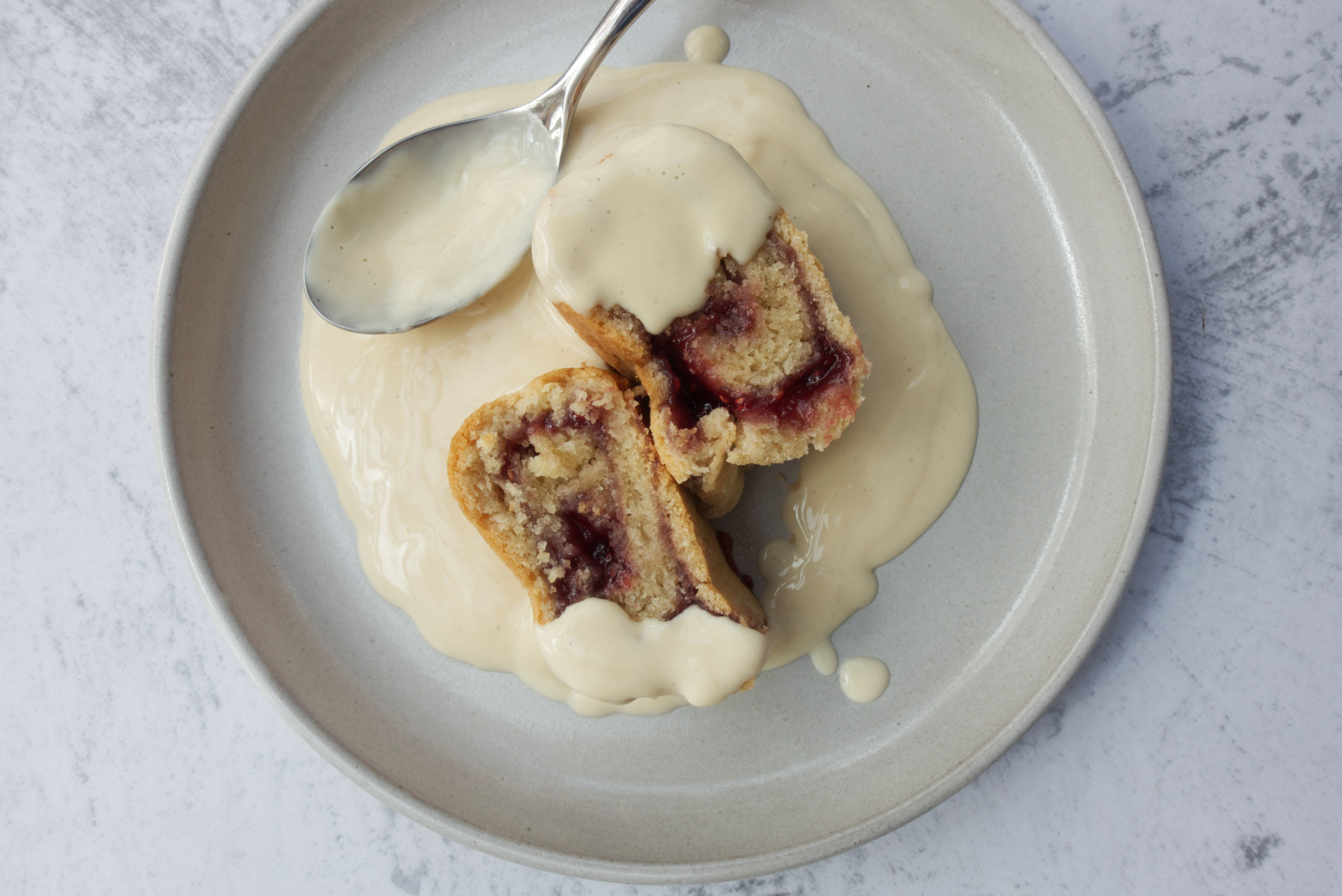More than new pencil cases, name tapes, and the smell of school halls, back to school season always makes me think of proper puddings. There’s a category of pudding that seems reserved for properly old cookbooks, a handful of old-fashioned pubs, and dinner ladies. Spotted dick, cornflake tart, and jam roly poly.
Perhaps its ubiquity at school lunches accounts for its ghoulish alias: dead man’s leg or dead man’s arm. School children have a taste for the macabre, but to be fair to them when the pudding is unwrapped and before it is sliced, it does look fairly uninspiring, and not a hundred miles away from a pallid limb. This probably wasn’t helped by the fact that, before baking parchment and foil were widespread, the pudding would be steamed in a shirtsleeve. For those children for whom even these visuals aren’t sufficiently horrifying, there is Beatrix Potter’s The Tale of Samuel Whiskers or The Roly-Poly Pudding which sees Tom Kitten covered with butter and dough by the rats Samuel Whiskers and his wife Anna Maria, who plan to turn him into a roly poly, no doubt traumatising children for years to come.
Roly poly tends to be steamed in the oven, which is, I think, a simpler and less intensive way of steaming. Suspended over a roasting pan of water, wrapped up in baking paper and foil, the low oven is filled with steam from the water, which cooks the pudding gently, letting it expand without forming a tough crust. It means that, unlike steaming on the hob, you’re not simultaneously steaming your whole kitchen – and it’s much quicker in the oven too.
It’s a pretty easy pudding to make: a suet pastry – you can use standard suet or vegetarian, both are fine – is the basis for a jam roly poly. Suet has a lower water content that butter, so the pastry you make with it is even shorter than the buttery stuff. The ingredients for this are brought together into a soft but rollable dough, which is then spread with jam. The whole thing is rolled up from one end, which creates the distinctive swirl of jam throughout the pudding, then secured inside its protective wrapping. Cutting that first slice, revealing the spiral within, is distinctly satisfying.
This isn’t the place for an insipid or (frankly) cheap jam: it’s the dominant flavour here.
Darker jams are more striking against the pale sponge, so raspberry, blackberry, and blackcurrant are obvious choices. But if you’re happy to choose flavour over aesthetic, then this is a great place to showcase your favourite jam, perhaps even a homemade one. Or if you like the bittersweet (and I do) you can channel Mrs Beaver from C.S.Lewis’ The Lion, The Witch and the Wardrobe and swap out the jam for marmalade, to make a ‘great and gloriously sticky marmalade roll’.
Like all the best puds – and I feel like something of a broken record, here – it is best served steaming hot, with very thick, cold custard.

Jam Roly Poly
Makes: Serves 8
Takes: 10 minutes
Bakes: 1 hour
200g self raising flour
75g shredded suet
50g salted butter
100ml whole milk
1 tbsp caster sugar
200g jam of your choice
- Preheat your oven to 180°C. Cut a piece of baking parchment about 30x30cm and a piece of foil about 30x40cm. Place the baking parchment on top of the foil.
- Rub the butter into the flour until it resembles breadcrumbs. Stir through the suet and sugar, followed by the milk. Use a knife to bring the dough together then use your hands to briefly knead it until it is pliable.
- Turn the dough out onto a floured work surface, and roll out into a 25x25cm square. Spoon the jam onto the dough, leaving a centimetre border around the edge of the dough. Roll up the dough until the edges meet: gently squeeze the seams and ends closed, and carefully lift onto the baking paper and foil, seam-side down.
- Roll the baking paper and foil snugly (but not too tightly; the pudding will expand as it cooks) around the roll, twisting the ends of the roll to secure.
- Fill a large roasting tin ⅔ full with boiling water, and carefully transfer to the oven. If your roasting tin has a rack suspended above it, place the wrapped roll, seam-side down; if it doesn’t, place it on an oven rack just above the tin.
- Cook the pudding for one hour in the oven. Carefully remove from the oven, and leave to stand for ten minutes before unwrapping, slicing thickly, and serving with lots of custard.







Comments